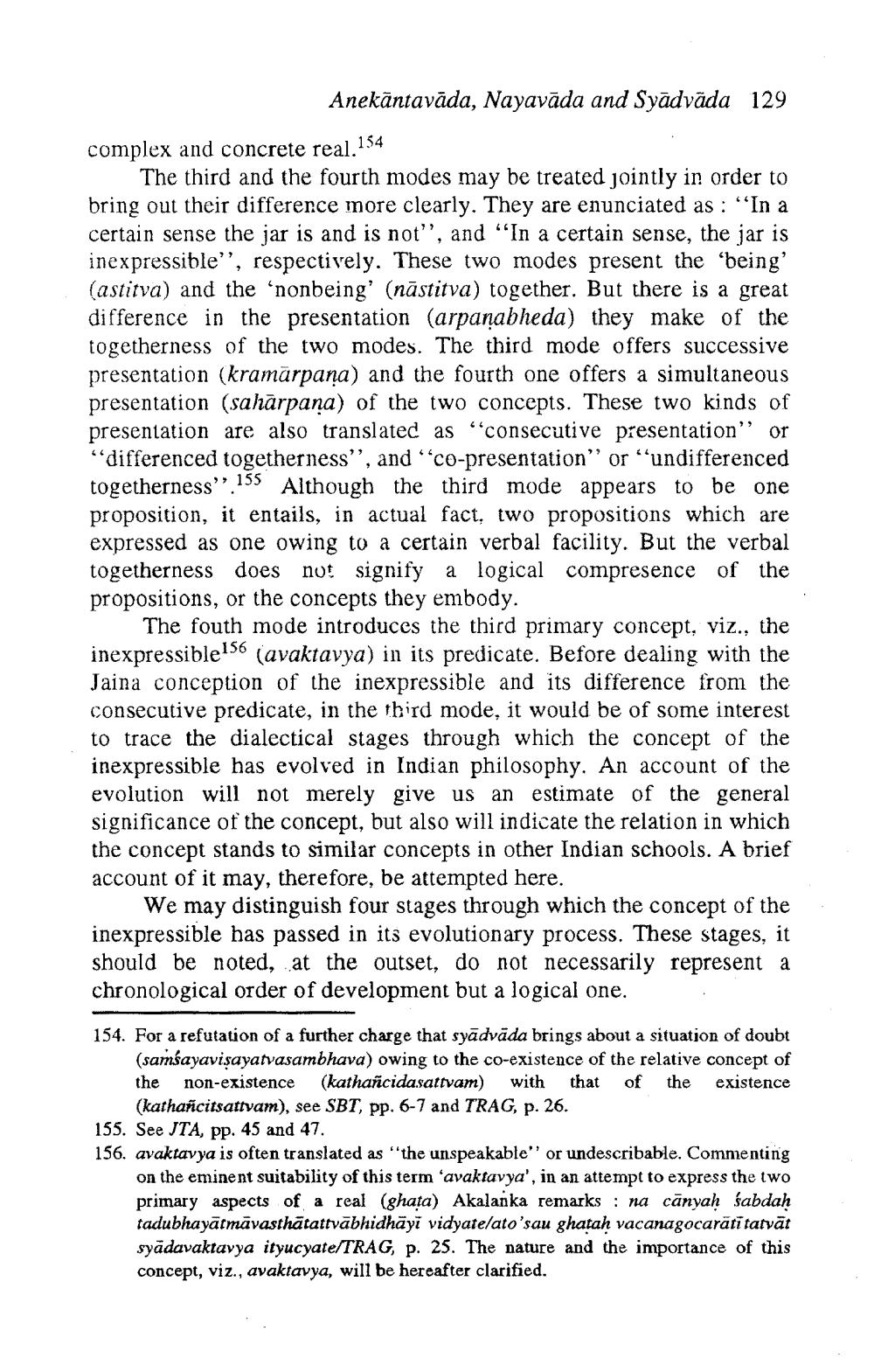________________
Anekāntavāda, Nayavāda and Syādväda 129
complex and concrete real. 154
The third and the fourth modes may be treated jointly in order to bring out their difference more clearly. They are enunciated as : “In a certain sense the jar is and is not", and "In a certain sense, the jar is inexpressible”, respectively. These two modes present the being' (astitva) and the ‘nonbeing' (nāstitva) together. But there is a great difference in the presentation (arpanabheda) they make of the togetherness of the two modes. The third mode offers successive presentation (kramarpana) and the fourth one offers a simultaneous presentation (sahārpana) of the two concepts. These two kinds of presentation are also translated as "consecutive presentation or "differenced togetherness", and co-presentation" or "undifferenced togetherness'' 155 Although the third mode appears to be one proposition, it entails, in actual fact, two propositions which are expressed as one owing to a certain verbal facility. But the verbal togetherness does not signify a logical compresence of the propositions, or the concepts they embody.
The fouth mode introduces the third primary concept, viz., the inexpressible156 (avaktavya) in its predicate. Before dealing with the Jaina conception of the inexpressible and its difference from the consecutive predicate, in the third mode, it would be of some interest to trace the dialectical stages through which the concept of the inexpressible has evolved in Indian philosophy. An account of the evolution will not merely give us an estimate of the general significance of the concept, but also will indicate the relation in which the concept stands to similar concepts in other Indian schools. A brief account of it may, therefore, be attempted here.
We may distinguish four stages through which the concept of the inexpressible has passed in its evolutionary process. These stages, it should be noted, at the outset, do not necessarily represent a chronological order of development but a logical one.
154. For a refutation of a further charge that syadvāda brings about a situation of doubt
(samsayavisayatvasambhava) owing to the co-existence of the relative concept of the non-existence (kathañcidasattvam) with that of the existence
(kathañcitsattvam), see SBT, pp. 6-7 and TRAG, p. 26. 155. See JTA, pp. 45 and 47. 156. avaktavya is often translated as "the unspeakable'' or undescribable. Commenting
on the eminent suitability of this term 'avaktavya', in an attempt to express the two primary aspects of a real (ghata) Akalanka remarks : na cānyah sabdah tadubhayātmāvasthātattvābhidhāyi vidyatelato'sau ghatah vacanagocaräti tatvāt syādavaktavya ityucyate/TRAG, p. 25. The nature and the importance of this concept, viz., avaktavya, will be hereafter clarified.




